In this post I want to take a close look at one verse in Psalm 89. This psalm contains a fascinating blending of two major biblical themes: creation and kingship. The central thrust of this psalm is to beseech God to restore the Davidic dynasty, in keeping with the promise made to David: “Your house and your kingdom shall be made sure forever before me; your throne shall be established forever” (2 Samuel 7:16).
Most scholars agree that in its final form, this psalm is post-Exilic, meaning it was written after the Kingdom of Judah was destroyed in 586 BCE and the house of David had fallen. This is because the second half of the psalm is a gloomy lament, describing God as one who has “rejected, spurned and become enraged at your anointed [mashiach]” (v. 39) and asking, “where is your steadfast love of old which you swore to David?” (v.50). But the first half of the psalm is quite different. It much more optimistic, extolling God as the creator of the universe as well as the one who selected of the line of David to serve as the kings of Israel for all time. Presumably, this first half is much older than the second half, as we will see if we examine one curious verse. The Masoretic Hebrew text of Psalm 89:12 (note: in Jewish Bibles this is verse 13) reads as follows:
צָפוֹן וְיָמִין אַתָּה בְרָאתָם, תָּבוֹר וְחֶרְמוֹן בְּשִׁמְךָ יְרַנֵּנוּ
A survey of the most commonly used English translations (KJV, NIV, NRSV, NLT) shows that all have more or less translated the verse as follows:
The north and the south you created them; Tabor and Hermon joyously praise your name.
That is to say, contrary to the parallelism that we so often see in the Book of Psalms, this verse exhibits no such perfect correspondence. Whereas the first half of the verse refers to generic directions (north/south), the second half references specific places (Tabor/Hermon). But if we have a closer look, we see that maybe the widely accepted English translation is not quite right.
Let’s begin with the second half of the verse: “Tabor and Hermon joyously praise your name”, a reference to two of the most famous mountains in the Land of Israel. Mount Tabor is located just east of the Nazareth ridge of the Lower Galilee in the Kessuloth branch of the Jezreel Valley. Due to its perfect dome shaped profile, Mount Tabor is one of the most instantly recognizable mountains in the Land of Israel. Although it is not particularly tall (the summit elevation is a mere 562 meters/1843 feet above sea level), it stands out very distinctively in the middle of the valley. Mount Tabor is famously mentioned in Judges chapter 4 as the site where Barak gathered his troops before storming down into the valley to defeat Sisera at the Brook of Kishon. There is a tradition which refers to Mount Tabor as “Little Hermon”, which might be influenced by the verse we are examining here. According to a later folk etymological tradition, the name Tabor (תבור in Hebrew, thavor) comes from the fact that the mountain looks like an inverted “navel” (טבור in Hebrew, tabur). In reality, the name of the mountain comes from the name of a Canaanite god named Baal–Tabor (later in Greek this became Zeus Atabyrios) who was believed to live in a cave on the summit. The prophet Hosea who lived in the 8th century BCE describes this still popular cult as “a net spread upon Tabor” (Hosea 5:1).
Mount Hermon, on the other hand, is a much taller mountain, reaching en elevation of 2814 meters (9232 feet) above sea level, which is the highest peak in the Anti-Lebanon range. Due to its prominent height, Hermon was famously referred to as “the eyes of the country” by an Israeli soldier in the 1973 Yom Kippur War, It is also a very wide mountain (technically a bloc of mountains) which spreads 45 kilometers across the borders of three modern countries: Syria, Lebanon and Israel. Covered in snow much of the year, it is the principle source of the fresh water that runs through the Jordan Rift Valley: into the Sea of Galilee, through the Jordan River and finally into the Dead Sea. The name Hermon derives from the Semitic root hrm which means “sacred” (for example: herem means “consecreted” in biblical Hebrew; haram means “sanctuary” in Arabic). Mount Hermon was apparently the dwelling place of a Canaanite god named Baal-Hermon, a name preserved in two biblical verses: Judges 3:3 and 1 Chronicles 5:23.
Clearly, Tabor and Hermon are not very similar mountains, and Psalm 89:12 is the only verse in the Bible that links them. The common theme which links these two mountains is their association with the Canaanite god Baal. Who is Baal exactly? The name Baal means “master” and denotes the weather god who is in control of the clouds, and therefore responsible for the most precious rescource in the Near East: rainwater. Within the Canaanite pantheon, as revealed in the famous cuneiform archive of Ugarit, Baal was second only to the supreme deity, El. In addition to the single great storm god Baal (who is also known as Hadad) there were scores of minor local Baals who have double names such as the two we have seen here: Baal-Tabor and Baal-Hermon. Other examples found in the Hebrew Bible are: Baal-Gad (Joshua 11:17), Baal-Perazim (2 Sam 5:20), Baal-Hazor (2 Sam 13:23). This apparently is the meaning of the plural term בעלים “Baalim” seen in Judges 2:11. So Tabor and Hermon were the sites of ancient Canaanite shrines to local Baal gods. They retained their sanctity as popular pilgrimage sites well after the Israelite conquest of the Land. This verse in Psalms is an attempt to co-opt that older pagan tradition, to assimilate it into the monotheistic worldview of the Hebrew Bible, without totally wiping the slate clean. The most famous example of a biblical psalm adapting the language of divine warfare from Canaanite mythology is Psalm 29, which depicts the Lord “shatters the cedars of Lebanon” and “convulses the wilderness of Kadesh”.
Interestingly, Tabor and Hermon are also connected by their similar association with a famous New Testament event: the Transfiguration of Jesus. None of the gospels specifies where this took place, saying simply that Jesus led three of his disciples “up a high mountain apart, by themselves” (Mark 9:2 and parallels). The traditional site where this episode has been commemorated since the third century is Mount Tabor. Today one can visit two churches (Roman Catholic and Greek Orthodox) on the summit which memorialize this event. In recent decades, however, it has become popular to identify Mount Hermon as the site of the Transfiguration. This is due to the fact that in the Gospel of Matthew, this episode takes place directly after Jesus preaches in Caeasarea Philippi, which is located at the foot of Mt Hermon (Matthew 17).
Now let’s return to the first half of Psalm 89:12. The Hebrew word translated here as “north” is zaphon (צפון). Although this is an accurate translation in most instances, in this verse the word zaphon might not be a reference to a direction but a particular mountain called Zaphon. Mount Zaphon (or Mount Sapan) is the ancient name of a famous peak known today as Jebel Aqraa, which means “Bald Mountain” in Arabic, a reference to the unforested limestone summit visible from great distances. the highest mountain in Syria, located on the Mediterranean coast near the mouth of Orontes River. This was one of the holiest sites for the Canaanites because it was here that the great storm god Baal-Hadad was believed to dwell. Mount Zaphon is also mentioned in Psalm 48:2, where it is referred to as “the distant north” (yarketei zaphon, יַרְכְּתֵי צָפוֹן), a phrase alternatively translated as “the recesses of Zaphon” or “the summit of Zaphon”. Interestingly, Psalm 48 has chosen to take this ancient Canaanite name and move it to Jerusalem where a new mountain, Mount Zion, has become the holiest site in Israel. Another biblical verse that uses the same phrase to refer to this northern mountain is Isaiah 14:13, calling it “the mount of assembly on the summit of Zaphon” (הַר-מוֹעֵד בְּיַרְכְּתֵי צָפוֹן).
The Hebrew word in Psalm 89:12 translated as “south” is yamin (ימין). This might surprise readers who are familiar with Hebrew. The most familiar meaning of yamin is the direction “right”. The Bible normally denotes “south” by using the word darom or the geographical terms Negev (the southern desert of Israel), or Teiman (the southern Arabian region of Yemen). The Hebrew Bible envisions the geography of the Land of Israel as viewed from the perspective of someone standing on the Mediterranean Coast in the vicinity of Jaffa, looking east towards the rising sun. Thus, what we call east is “forward” (kedem), west is “backward” (akhor) or “seawards” (yam), north is “left” (semol) and south is “right” (yamin). This is the reason why English Bibles have translated the word yamin word as “south” and not “right”. But in Psalm 89, a better translation of yamin might be the specific toponym “Mount Yamin”, a reference to another Canaanite cultic site. This is most probably the Amanus (Amanah) range, a southern part of the Taurus Mountains, today known as the Nur Mountains. Some scholars identify this mountain as the dwelling place of another local god, Baal-Hamon, mentioned as the site of one of Solomon’s vineyards (Song of Songs 8:11).
So, if we translate the verse as it might have been intended, we have the following four holy mountains, all located in the northern half of the holy land:
Zaphon and Yamin you created them;Tabor and Hermon joyously praise your name.
It might be disconcerting to some to learn that the Hebrew Bible has so blatantly preserved elements of ancient Canaanite mythology. We are used to thinking of the Bible’s radical message of monotheism wiping out all remnants of polytheism that came before. The story of Elijah vanquishing the prophets of Baal on Mount Carmel (another sacred mountain) in 1 Kings 18 is the most famous example of this anti-Baal theme.
But alongside this mode, the Bible contains many verses that retain the ancient Baal imagery and apply it to God. The most famous example is the term “cloud rider” (רֹכֵב בָּעֲרָבוֹת rkb b‘rbt) in Psalm 68:4, which almost exactly reproduces one of Baal’s names: rkb ‘rpt. In a fascinating passage Jeremiah lashes out at the foolish people who worship idols of Baal and at the same time he brilliantly applies much of the Baal imagery to the one God:
But the Lord is the true God; he is the living God and the everlasting King. At his wrath the earth quakes, and the nations cannot endure his indignation. Thus shall you say to them: The gods who did not make the heavens and the earth shall perish from the earth and from under the heavens. It is he who made the earth by his power,who established the world by his wisdom, and by his understanding stretched out the heavens.When he utters his voice, there is a tumult of waters in the heavens, and he makes the mist rise from the ends of the earth. He makes lightnings for the rain, and he brings out the wind from his storehouses. (Jeremiah 10:10-13)
When the new Israelite identity emerged during the Iron Age, it could not simply start from scratch. Many elements of the older Canaanite religion, particularly legends and sacred sites were absorbed into the new religion of Israel. In the Talmudic period, farmers in the Land of Israel made a distinction between irrigation agriculture (which they called shelachin, channels) and dryland agriculture (which they called baal). Does the fact that the rabbis used the name of an ancient Canaanite god to refer to fields watered by rainwater alone mean they were secret Baal worshippers? No, of course not! It simply shows us how rich the culture of the Near East is, layer upon layer, ancient words constantly shifting their meaning as they are appropriated by each generation. It is very eye-opening to see the many layers of meaning that are present in the text. These types of insights, of course, are only possible if one is able to access the authentic literary and geographical aspects of the Bible.



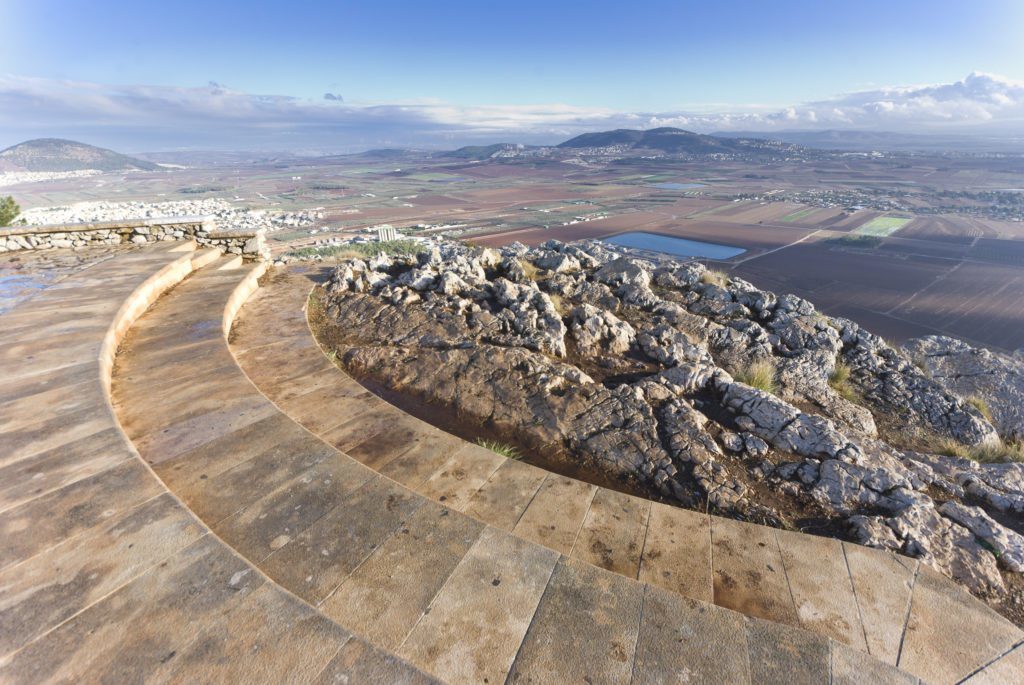

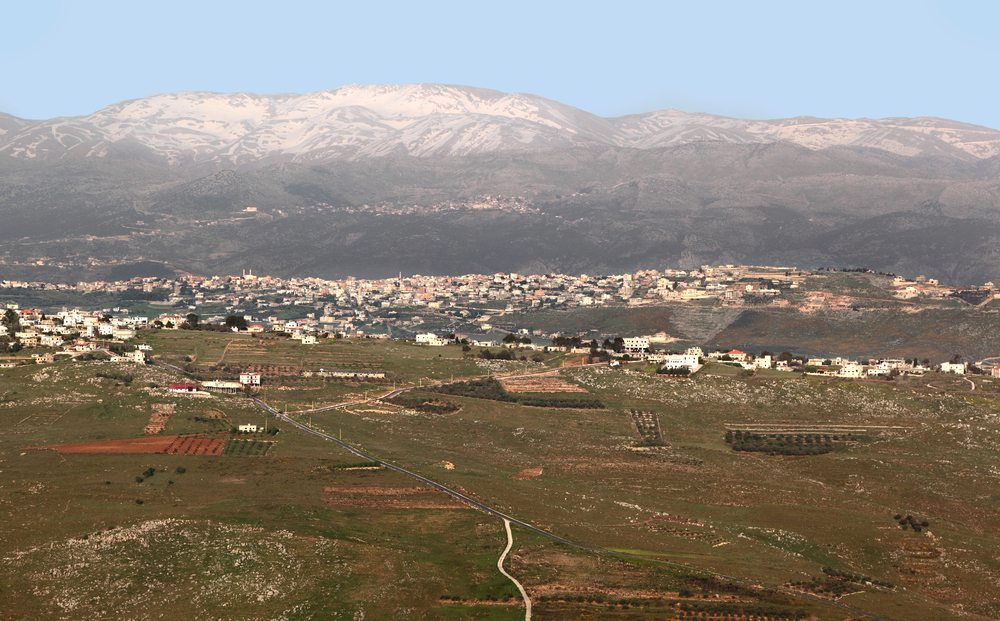


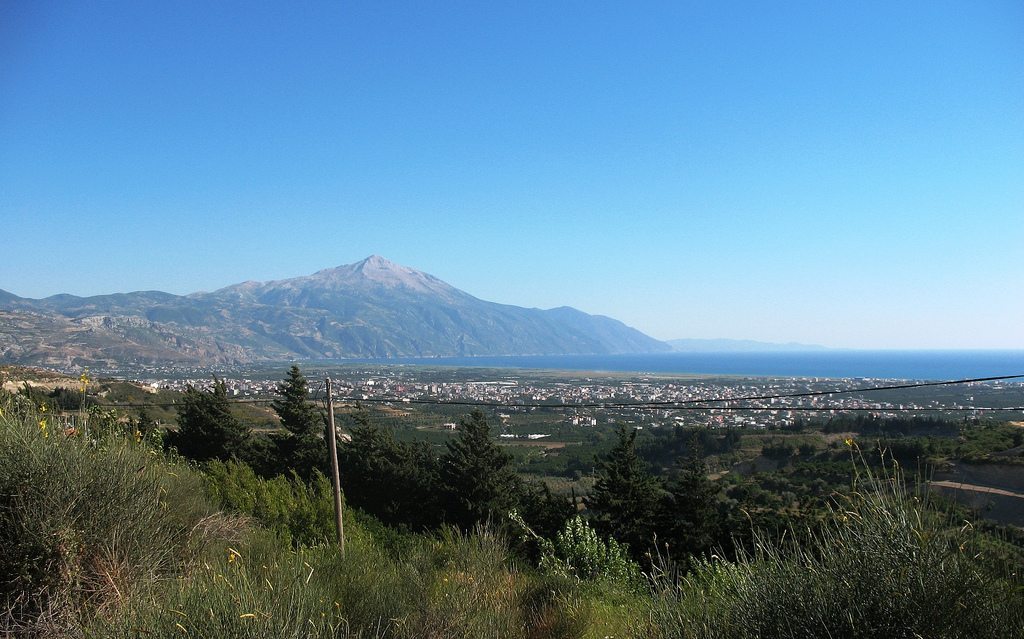
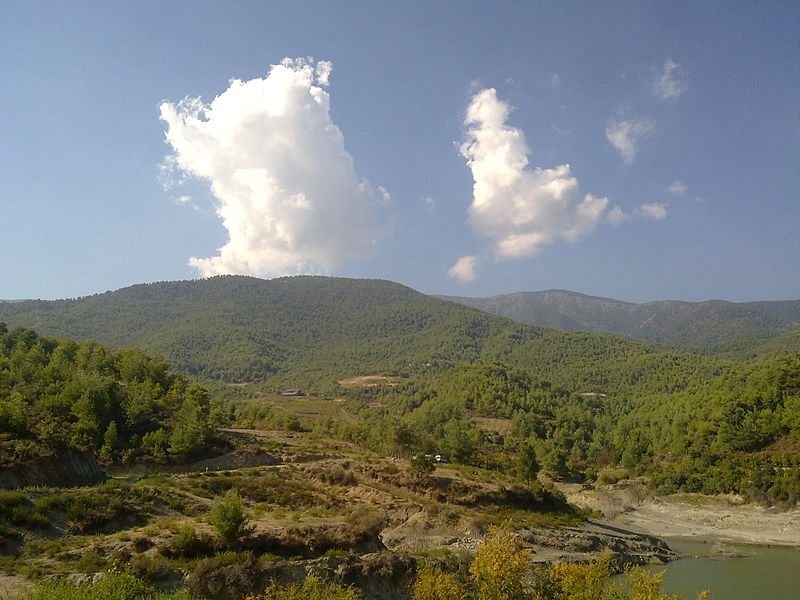

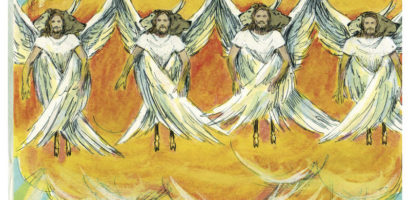

[…] Click here for the article “Four Sacred Mountains” by Jonathan Lipnick, and click here for “The Pagan Cult on Tabor” by Teresa Petrozzi. […]
what is your photo permission policy?
The images on this blog are all in the public domain, from Wikimedia Commons. You are welcome to use them, or better yet check out the site for yourself!
I think it is about time that supernatural, panoarrmal, events begin to happen again, it seems like about every 10 years or so things change. With the political scene the way it is at the moment, I am hoping that end times, supernatural stuff is going to get popular in a greater way.With the vampire stuff being popular, we need some Christian angels and helpful people who listen to the Lord in the next generation of kids.Just my take and hope. I suppose I feel that genre because that is what I like to write.Good luck to all. Paulette Harris
I have been seeking the answers to questions that first came up for me when I tried to teach my daughters, as teens. Christian bible is too often misinterpreted to send young men to war for God and Nation and to lead young women to total submission. Neither is the true message of the Bible.
Recently trying to read Daniel in following up the verse that says with God all things are possible. I got totally lost.
This is exactly what I am seeking. The fundamental facts of religion as it relates to geography and history.
Thank you for a great article.